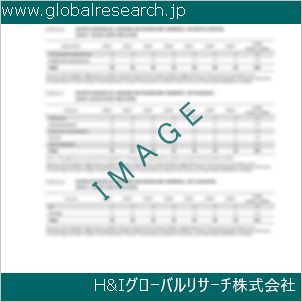目次
第1章. グローバル電気絶縁材料市場レポートの範囲と方法論
1.1. 研究目的
1.2. 研究方法論
1.2.1. 予測モデル
1.2.2. デスク調査
1.2.3. トップダウンとボトムアップアプローチ
1.3. 研究の属性
1.4. 研究の範囲
1.4.1. 市場定義
1.4.2. 市場セグメンテーション
1.5. 研究の仮定
1.5.1. 包含と除外
1.5.2. 制限事項
1.5.3. 調査対象期間
第2章 執行要約
2.1. CEO/CXOの視点
2.2. 戦略的洞察
2.3. ESG分析
2.4. 主要な発見
第3章. グローバル電気絶縁材料市場動向分析(2024–2035)
3.1. グローバル電気絶縁材料市場を形作る市場要因(2024–2035)
3.2. 推進要因
3.2.1. グローバルな電気化とスマートグリッドの進展
3.2.2. コンパクトでエネルギー効率の高い電子機器の需要拡大
3.3. 制約
3.3.1. 原材料価格の変動
3.3.2. 絶縁材料に関する環境問題とリサイクルに関する懸念
3.4. 機会
3.4.1. 絶縁材料の再生可能エネルギーシステムへの統合
3.4.2. 電気自動車およびバッテリー製造業界の急成長
第4章 グローバル電気絶縁材料産業分析
4.1. ポーターの5つの力モデル
4.1.1. 購入者の交渉力
4.1.2. 供給者の交渉力
4.1.3. 新規参入の脅威
4.1.4. 代替品の脅威
4.1.5. 競合企業の競争
4.2. ポーターの5つの力予測モデル(2024–2035)
4.3. PESTEL分析
4.3.1. 政治
4.3.2. 経済的
4.3.3. 社会
4.3.4. 技術的
4.3.5. 環境
4.3.6. 法的
4.4. 主要な投資機会
4.5. 主要な成功戦略(2025年)
4.6. 市場シェア分析(2024–2025)
4.7. グローバル価格分析と動向(2025年)
4.8. 分析家の推奨事項と結論
第5章. グローバル電気絶縁材料市場規模と予測(タイプ別)2025–2035
5.1. 市場概要
5.2. グローバル電気絶縁材料市場パフォーマンス – 潜在分析(2025年)
5.3. 熱可塑性樹脂
5.3.1. 主要国別内訳推計と予測(2024–2035)
5.3.2. 地域別市場規模分析(2025年~2035年)
5.4. エポキシ樹脂
5.4.1. 主要国別市場規模推計と予測(2024年~2035年)
5.4.2. 地域別市場規模分析、2025–2035
5.5. セラミックス
5.5.1. 主要国別市場規模推計と予測(2024年~2035年)
5.5.2. 地域別市場規模分析、2025–2035
第6章. グローバル電気絶縁材料市場規模と予測(用途別)、2025–2035
6.1. 市場概要
6.2. グローバル電気絶縁材料市場パフォーマンス – 潜在分析(2025年)
6.3. 電力システム
6.3.1. 主要国別内訳推計と予測(2024–2035)
6.3.2. 地域別市場規模分析(2025年~2035年)
6.4. 電子システム
6.4.1. 主要国別市場規模推計と予測(2024年~2035年)
6.4.2. 地域別市場規模分析、2025–2035
6.5. ケーブルおよび伝送線
6.5.1. 主要国別内訳推計と予測(2024年~2035年)
6.5.2. 地域別市場規模分析、2025–2035
6.6. 国内携帯用家電製品
6.6.1. 主要国別内訳推計と予測(2024年~2035年)
6.6.2. 地域別市場規模分析、2025–2035
第7章. グローバル電気絶縁材料市場規模と地域別予測(2025–2035年)
7.1. 電気絶縁材料市場、地域別市場概要
7.2. 主要国と新興国
7.3. 北米電気絶縁材料市場
7.3.1. 米国市場
7.3.1.1. タイプ別市場規模と予測(2025–2035年)
7.3.1.2. 用途別市場規模と予測(2025年~2035年)
7.3.2. カナダ市場
7.3.2.1. 種類別市場規模と予測(2025年~2035年)
7.3.2.2. 用途別市場規模と予測(2025年~2035年)
7.4. 欧州電気絶縁材料市場
7.4.1. イギリス市場
7.4.1.1. 種類別市場規模と予測(2025~2035年)
7.4.1.2. 用途別市場規模と予測(2025~2035年)
7.4.2. ドイツ市場
7.4.3. フランス市場
7.4.4. スペイン市場
7.4.5. イタリア市場
7.4.6. 欧州その他
7.5. アジア太平洋地域電気絶縁材料市場
7.5.1. 中国市場
7.5.2. インド市場
7.5.3. 日本市場
7.5.4. オーストラリア市場
7.5.5. 韓国市場
7.5.6. アジア太平洋地域その他
7.6. ラテンアメリカ電気絶縁材料市場
7.6.1. ブラジル市場
7.6.2. メキシコ市場
7.7. 中東・アフリカ電気絶縁材料市場
7.7.1. アラブ首長国連邦(UAE)市場
7.7.2. サウジアラビア市場
7.7.3. 南アフリカ市場
7.7.4. 中東・アフリカその他の地域
第8章 競合分析
8.1. 主要な市場戦略
8.2. BASF SE
8.2.1. 当社概要
8.2.2. 主要な経営陣
8.2.3. 会社の概要
8.2.4. 財務実績(データ入手状況により異なります)
8.2.5. 製品/サービスポートフォリオ
8.2.6. 最近の動向
8.2.7. 市場戦略
8.2.8. SWOT分析
8.3. デュポン・デ・ネムール社
8.4. 3Mカンパニー
8.5. ニチドウ株式会社
8.6. サンゴバン・S.A.
8.7. 日立製作所
8.8. 住友電気工業株式会社
8.9. ハンツマン・コーポレーション
8.10. エランタス(アルタナAG)
8.11. コベストロAG
8.12. フォン・ロール・ホールディング AG
8.13. 古河電気工業株式会社
8.14. ダウ・インク
8.15. 三菱化学グループ株式会社
8.16. ヘンケルAG&カンパニーKGaA
表の一覧
表1. グローバル電気絶縁材料市場、レポートの範囲
表2. グローバル電気絶縁材料市場の見積もりおよび予測(地域別)2024–2035
表3. グローバル電気絶縁材料市場規模推計と予測(種類別)2024–2035
表4. グローバル電気絶縁材料市場規模推計と予測(用途別)2024–2035
表5. 米国電気絶縁材料市場の見積もりおよび予測、2024–2035
表6. カナダ電気絶縁材料市場規模予測(2024~2035年)
表7. イギリス電気絶縁材料市場規模推計と予測、2024–2035
表8. ドイツの電気絶縁材料市場規模推計と予測(2024~2035年)
表9. フランス電気絶縁材料市場規模予測(2024~2035年)
表10. スペインの電気絶縁材料市場規模予測(2024~2035年)
表11. イタリアの電気絶縁材料市場規模と予測(2024~2035年)
表12. 欧州その他の地域 電気絶縁材料市場規模予測(2024~2035年)
表13. 中国の電気絶縁材料市場規模推計と予測(2024~2035年)
表14. インドの電気絶縁材料市場規模推計と予測(2024~2035年)
表15. 日本の電気絶縁材料市場規模推計と予測(2024~2035年)
表16. オーストラリアの電気絶縁材料市場規模と予測(2024~2035年)
表17. 韓国の電気絶縁材料市場規模予測(2024~2035年)
表18. アジア太平洋地域(その他)市場規模推計と予測、2024–2035
表19. ブラジル電気絶縁材料市場規模予測(2024~2035年)
表20. メキシコ電気絶縁材料市場規模推計と予測(2024~2035年)
表21. アラブ首長国連邦(UAE)電気絶縁材料市場の見積もりおよび予測、2024–2035
表22. サウジアラビアの電気絶縁材料市場規模と予測(2024年~2035年)
表23. 南アフリカ電気絶縁材料市場規模予測(2024~2035年)
表24. 中東・アフリカその他の地域市場規模推計と予測(2024~2035年)
図表一覧
図1. グローバル電気絶縁材料市場、調査方法論
図2. グローバル電気絶縁材料市場、市場推計手法
図3. グローバル市場規模推計および予測方法
図4. グローバル電気絶縁材料市場、2025年の主要動向
図5. グローバル電気絶縁材料市場、成長見通し 2024–2035
図6. グローバル電気絶縁材料市場、ポーターの5つの力モデル
図7. グローバル電気絶縁材料市場、PESTEL分析
図8. グローバル電気絶縁材料市場、バリューチェーン分析
図9. 電気絶縁材料市場(種類別)、2025年と2035年
図10. 電気絶縁材料市場(用途別)、2025年と2035年
図11. 北米電気絶縁材料市場、2025年と2035年
図12. 欧州電気絶縁材料市場、2025年と2035年
図13. アジア太平洋地域電気絶縁材料市場、2025年と2035年
図14. ラテンアメリカ電気絶縁材料市場、2025年と2035年
図15. 中東・アフリカ電気絶縁材料市場、2025年と2035年
図16. グローバル電気絶縁材料市場、企業別市場シェア分析(2025年)
Chapter 1. Global Electrical Insulation Materials Market Report Scope & Methodology
1.1. Research Objective
1.2. Research Methodology
1.2.1. Forecast Model
1.2.2. Desk Research
1.2.3. Top Down and Bottom-Up Approach
1.3. Research Attributes
1.4. Scope of the Study
1.4.1. Market Definition
1.4.2. Market Segmentation
1.5. Research Assumption
1.5.1. Inclusion & Exclusion
1.5.2. Limitations
1.5.3. Years Considered for the Study
Chapter 2. Executive Summary
2.1. CEO/CXO Standpoint
2.2. Strategic Insights
2.3. ESG Analysis
2.4. Key Findings
Chapter 3. Global Electrical Insulation Materials Market Forces Analysis (2024–2035)
3.1. Market Forces Shaping the Global Electrical Insulation Materials Market (2024–2035)
3.2. Drivers
3.2.1. Rising global electrification and smart grid development
3.2.2. Expanding demand for compact and energy-efficient electronics
3.3. Restraints
3.3.1. Volatility in raw material pricing
3.3.2. Environmental and recycling concerns related to insulation materials
3.4. Opportunities
3.4.1. Integration of insulation materials in renewable energy systems
3.4.2. Surge in electric vehicle and battery manufacturing industries
Chapter 4. Global Electrical Insulation Materials Industry Analysis
4.1. Porter’s 5 Forces Model
4.1.1. Bargaining Power of Buyer
4.1.2. Bargaining Power of Supplier
4.1.3. Threat of New Entrants
4.1.4. Threat of Substitutes
4.1.5. Competitive Rivalry
4.2. Porter’s 5 Force Forecast Model (2024–2035)
4.3. PESTEL Analysis
4.3.1. Political
4.3.2. Economical
4.3.3. Social
4.3.4. Technological
4.3.5. Environmental
4.3.6. Legal
4.4. Top Investment Opportunities
4.5. Top Winning Strategies (2025)
4.6. Market Share Analysis (2024–2025)
4.7. Global Pricing Analysis and Trends 2025
4.8. Analyst Recommendation & Conclusion
Chapter 5. Global Electrical Insulation Materials Market Size & Forecasts by Type 2025–2035
5.1. Market Overview
5.2. Global Electrical Insulation Materials Market Performance – Potential Analysis (2025)
5.3. Thermoplastics
5.3.1. Top Countries Breakdown Estimates & Forecasts, 2024–2035
5.3.2. Market Size Analysis, by Region, 2025–2035
5.4. Epoxy Resins
5.4.1. Top Countries Breakdown Estimates & Forecasts, 2024–2035
5.4.2. Market Size Analysis, by Region, 2025–2035
5.5. Ceramics
5.5.1. Top Countries Breakdown Estimates & Forecasts, 2024–2035
5.5.2. Market Size Analysis, by Region, 2025–2035
Chapter 6. Global Electrical Insulation Materials Market Size & Forecasts by Application 2025–2035
6.1. Market Overview
6.2. Global Electrical Insulation Materials Market Performance – Potential Analysis (2025)
6.3. Power Systems
6.3.1. Top Countries Breakdown Estimates & Forecasts, 2024–2035
6.3.2. Market Size Analysis, by Region, 2025–2035
6.4. Electronic Systems
6.4.1. Top Countries Breakdown Estimates & Forecasts, 2024–2035
6.4.2. Market Size Analysis, by Region, 2025–2035
6.5. Cables & Transmission Lines
6.5.1. Top Countries Breakdown Estimates & Forecasts, 2024–2035
6.5.2. Market Size Analysis, by Region, 2025–2035
6.6. Domestic Portable Appliances
6.6.1. Top Countries Breakdown Estimates & Forecasts, 2024–2035
6.6.2. Market Size Analysis, by Region, 2025–2035
Chapter 7. Global Electrical Insulation Materials Market Size & Forecasts by Region 2025–2035
7.1. Electrical Insulation Materials Market, Regional Market Snapshot
7.2. Top Leading & Emerging Countries
7.3. North America Electrical Insulation Materials Market
7.3.1. U.S. Market
7.3.1.1. Type Breakdown Size & Forecasts, 2025–2035
7.3.1.2. Application Breakdown Size & Forecasts, 2025–2035
7.3.2. Canada Market
7.3.2.1. Type Breakdown Size & Forecasts, 2025–2035
7.3.2.2. Application Breakdown Size & Forecasts, 2025–2035
7.4. Europe Electrical Insulation Materials Market
7.4.1. UK Market
7.4.1.1. Type Breakdown Size & Forecasts, 2025–2035
7.4.1.2. Application Breakdown Size & Forecasts, 2025–2035
7.4.2. Germany Market
7.4.3. France Market
7.4.4. Spain Market
7.4.5. Italy Market
7.4.6. Rest of Europe
7.5. Asia Pacific Electrical Insulation Materials Market
7.5.1. China Market
7.5.2. India Market
7.5.3. Japan Market
7.5.4. Australia Market
7.5.5. South Korea Market
7.5.6. Rest of Asia Pacific
7.6. Latin America Electrical Insulation Materials Market
7.6.1. Brazil Market
7.6.2. Mexico Market
7.7. Middle East & Africa Electrical Insulation Materials Market
7.7.1. UAE Market
7.7.2. Saudi Arabia Market
7.7.3. South Africa Market
7.7.4. Rest of Middle East & Africa
Chapter 8. Competitive Intelligence
8.1. Top Market Strategies
8.2. BASF SE
8.2.1. Company Overview
8.2.2. Key Executives
8.2.3. Company Snapshot
8.2.4. Financial Performance (Subject to Data Availability)
8.2.5. Product/Services Port
8.2.6. Recent Development
8.2.7. Market Strategies
8.2.8. SWOT Analysis
8.3. DuPont de Nemours, Inc.
8.4. 3M Company
8.5. Nitto Denko Corporation
8.6. Saint-Gobain S.A.
8.7. Hitachi, Ltd.
8.8. Sumitomo Electric Industries, Ltd.
8.9. Huntsman Corporation
8.10. Elantas (ALTANA AG)
8.11. Covestro AG
8.12. Von Roll Holding AG
8.13. Furukawa Electric Co., Ltd.
8.14. Dow Inc.
8.15. Mitsubishi Chemical Group Corporation
8.16. Henkel AG & Co. KGaA
❖ 免責事項 ❖
http://www.globalresearch.jp/disclaimer












